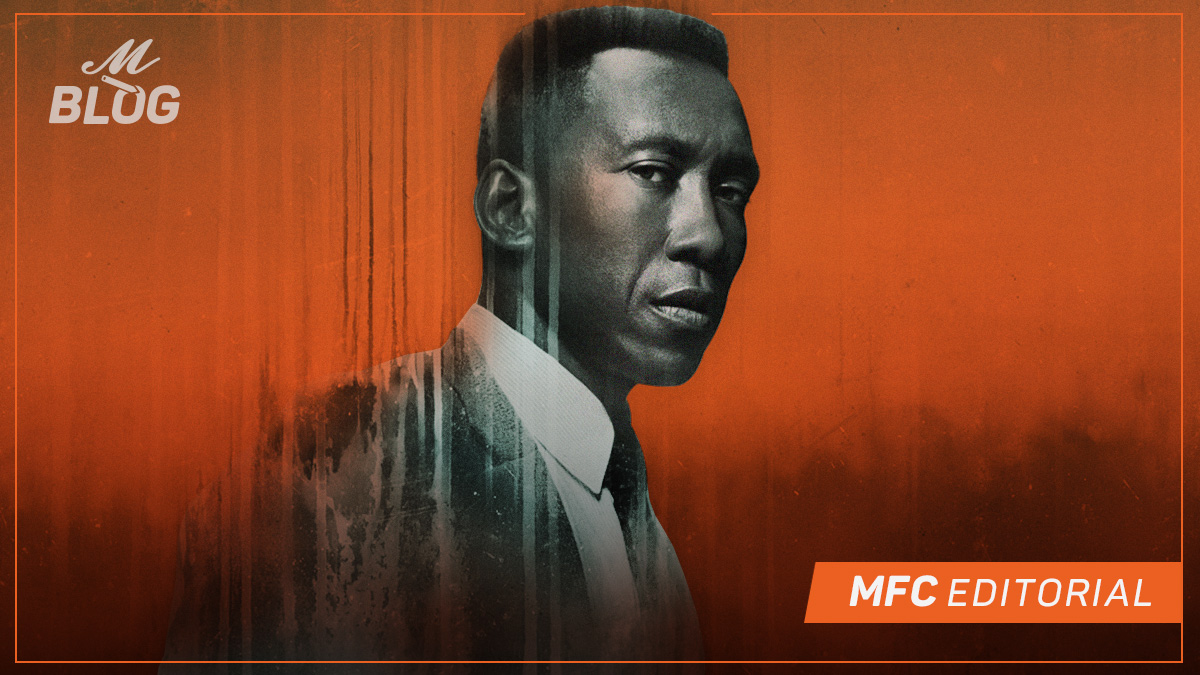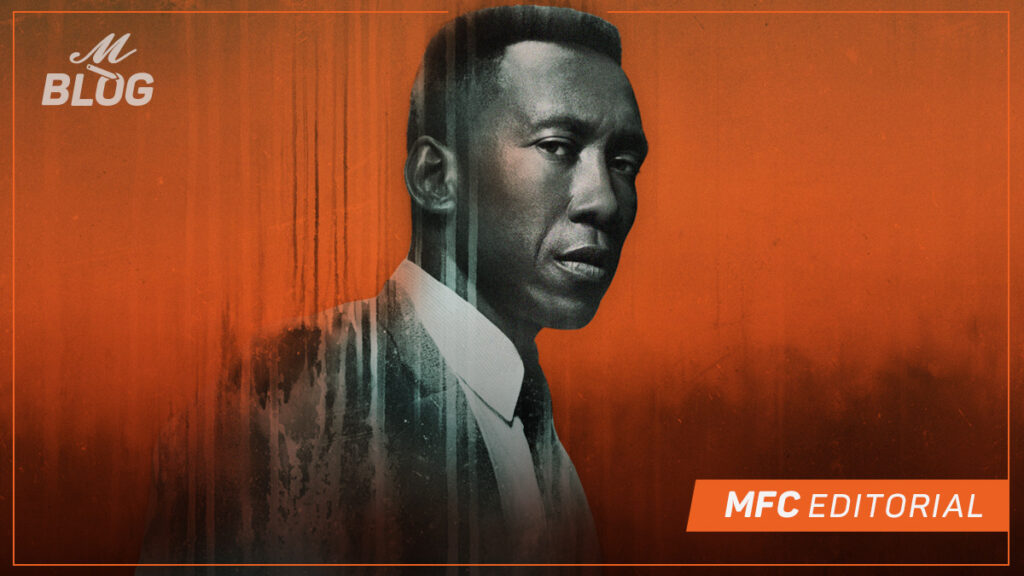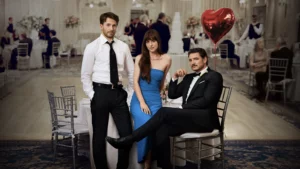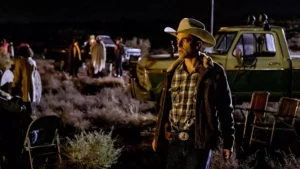
Investigating True Detective
MFC Editorial
On January 13th, HBO aired the first episode of True Detective’s third season, bringing a new mystery to the screen. With an outstanding performance by Oscar winner Mahershala Ali (Green Book, 2018), the season ended on February 24th.
True Detective stands out for being shrouded in a halo of mystery. Its crude stories often explore the sordid side of the human condition, while its characters go through complex and dark personal journeys.
This last season was no exception, giving us a arc so intricate that, more than answers, has left us full of questions:
What makes each season feels so independent, yer part of the same universe? What creative process hides behind each season? Is there a mysterious thread that combine all three stories under the same cloak?
In My Family Cinema we decided to open the case and, without spoilers, make an in-depth investigation.
Element 1: The Case

True Detective is one of the highest rated television shows of all time. Generating more than ten million viewers despite it not being for family audiences, the series has been positioned as one of the most daring in television.
Created by Nic Pizzolatto, True Detective’s first season was originally planned as a sequel to Galveston, the debut novel by the American writer, published on 2010. During its development, Pizzolatto noted that the best for this new story would be to turning it into a TV series, and after several versions, he concluded an approximately 500 pages script all by himself, confined in his own creativity.
With the full script, the series still needed a director to make it real. Although Oscar winner Alejandro González Iñárritu was first considered as the director for the first season, it was Cary Fukunaga (Jane Eyre, 2011) who made True Detective the visual jewel that it is today.
Matthew McConaughey (Interstellar, 2014) was the first casted actor, although originally intended for the character of Detective Martin “Marty” Hart. Later, McConaughey convinced Pizzolatto to give him the role of Detective Rustin “Rust” Cohle, bringing his friend Woody Harrelson (Zombieland, 2009) into the production, to play Marty. Both actors became executive producers for all three seasons.
In 2012 the project had already taken the form of a TV series for HBO, and by June of 2013 the shooting was over.
True Detective became one of the HBO’s biggest projects, with a cast of the highest category and an average of 11.9 million viewers per episode. Thus, in 2014, what was originally intended as a mini-series ended up being an anthology series, with two more seasons on the horizon, with 8 episodes each, new characters and different mysteries to unfold.
Element 2: The Investigations

Season 1:
The first season puts us in a gray and decadent Louisiana, where Detectives Martin Hart (Harrelson) and Rustin Cohle (McConaughey) investigate the homicide of Dora Lange, whose body was found in disturbing conditions. Thus, the detectives submerge into a 17-year investigation that measures their tempers against networks of child trafficking, supernatural cults and experiences that would mark their lives forever.
Through sordid criminal events, obscure symbology and a non-linear narrative that jumps between time periods, the story explores the darkest side not only of society, but of the human psyche. Being mostly a character study on Rustin Cohle, for which Matthew McConaughey created a four hundred fifty-page analysis called the “Four Stages of Rustin Cohle“, the pessimist philosophy and evolution of the character through the case become the fundamental themes in the season, exploring the value of life, social decadence and futility of existence.
Nic Pizzolatto acknowledged the strong influence of authors such as Emil Cioran y Friedrich Nietzsche, whose philosophical theories served as the basis for developing Rust’s ideas, as well as dealing with other notions such as religion, masculinity and authority, through Marty’s character.
The frequent time jumps serve to tell us three different periods of the case, with a history that travels from 1995 to 2012 and that touches supernatural themes inspired by the works of authors such as H. P. Lovecraft and Robert Chambers, deeping itself in an aura of mystery that seizes the spectators.
True Detective’s first season has gone down in history as one of the best audiovisual proposals, being considered a masterpiece by spectators and specialized critics alike.
Season 2:
The second season is starred by 4 characters: Detective Ray Velcoro, played by Colin Farrell (Fantastic Beasts and Where to Find Them, 2016), a corrupt official fighting a murky past; Detective Ani Bezzerides, played by Rachel McAdams (Doctor Strange, 2016), whose family problems tend to sneak into her work, bringing catastrophic consequences; Officer Paul Woodrugh, played by Taylor Kitsch (X-Men Origins: Wolverine, 2009), a patrolman and war veteran who deals with serious accusations; and Frank Semyon, played by Vince Vaughn (Dragged Across Concrete, 2018), a former mob leader whose efforts to move into the legal business are at risk. The detectives, all from different police departments, will merge their investigations to uncover the murderer of Ben Caspere, City Manager of the fictional city of Vinci, California, and collaborator of Frank Semyon, who has lost all of his money and influence due to the event.
This time we are told a story of apathy through broken characters, dedicated to discover a corruption plot that reaches high spheres of power. With a more direct narrative, the second season of True Detective uses resources such as omen and action sequences to explore the breakdowns and insecurities of emotionally vulnerable characters, in a story where evil always wins.
After 3 years of dedication to the script of the first season resulted in a work of great quality, HBO gave only 1 year to Nic Pizzolatto to complete the script of the second season of True Detective. Unlike the first project, Pizzolatto was not able to finish the script on its own in such a short time, so it involved the novelist Scott Lasser to complete it. Cary Fukunaga did not return to direct this new release, leaving the responsibility in the hands of various directors according to the episode, although he has remained as executive producer for all seasons.
Due to this, since this time it is about exploring the evolution of the double of characters in the same amount of episodes, the second season seems fragmented, without a precise goal, which left unsatisfied an audience that expected something similar or superior to the first season.
Season 3:
Despite the poor reception of the second season, the latest entry of True Detective has received very positive reviews, being considered a return to the roots. This time, Nic Pizzolatto not only worked as a writer, but also as showrunner, and made his directorial debut. At the same time, a bigger involvement of Cary Fukunaga, director of the first season, made it feel closer to the initial style
The third season of True Detective takes place in Ozark, a mountain region that shared by the states of Missouri, Arkansas and Oklahoma. It tells the story of detectives Wayne Hays, played by the Oscar winner for best supporting actor, Mahershala Ali, and Roland West, played by Stephen Dorff (Leatherface, 2017), who will investigate the disappearance of two children in the forest. The detectives will be joined by Amelia Reardon, played by Carmen Ejogo (Fantastic Beasts: The Crimes of Grindelwald, 2018) teacher of one of the children and future wife of Hays, and his son, Henry Hays, played by Ray Fisher (Justice League, 2017), indispensable characters for the development of the plot.
Similar to the first season, this new story jumps between 3 different time periods: 1980, 1990 and 2015. In each period we will be seeing the slow progress of the case and, above all, how the development of the characters is inevitably consumed by it. The time jumps are an important resource for the narrative structure of the season, which, along with the loss of memory that is affecting Hays as he ages, generates an instability feeling close to that suffered by the protagonist. At the same time, the recurrent and unexpected variation of times gives a sense of narrative simultaneity that greatly enriches the experience.
One of the fundamental themes of the third season of True Detective is that of memory as the most fearsome ghost. Wayne Hays’s character is slowly sinking into oblivion, making him question his own motives for acting, and whether his memories are real or not. It’s not by chance that a motif that frequently appears to guide the story is the reading of the poem by American author Delmore Schwartz “Calmly we walk through this april day”, which closes with the following verses:
Time is the school in which we learn,
Time is the fire in which we burn.
Conclusions

Having carefully investigated all True Detective three seasons, we can conclude that although each one has been approached in different ways by its creators (both in production and narratively), each story has something in common, a thread that transcends each entry and unites them in a greater sense:
True Detective is a show where the true case is not the crime that triggers each story, but the development of its characters in the midst of the chaos to which they have been thrown, and from which they cannot escape. Through a journey determined by the events of the investigation, the riddle that the detectives must solve is that of their own presumptions, emotions and perspectives. This is the mantle that covers the three stories of True Detective, a creative and arduous study of characters that are lost in the undergrowth, abandoned in an atrocious world.
Despite the ups and downs, True Detective is still positioned as one of the best received series of recent times. Although it is an anthology series, each season has contributed a new narrative proposal to the title, revealing new perspectives on life in each, both moral and metaphysical. We cannot help but wait for a fourth season to arrive, in which they can expand and, who knows, finally conclude this great story.
Case closed.







0 Comments